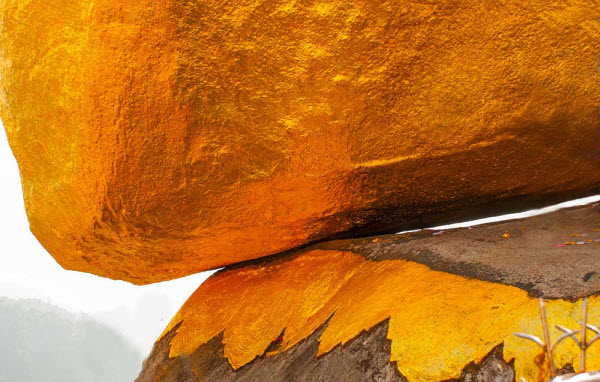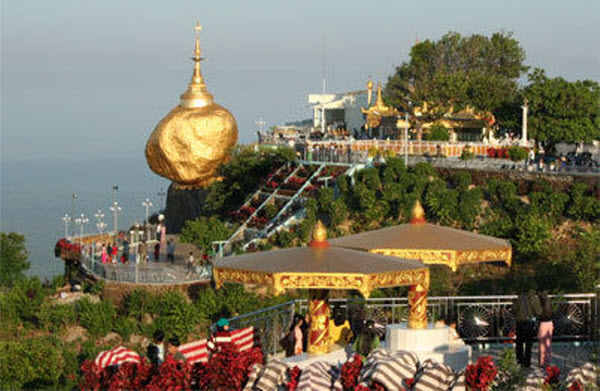Few things evoke a sense of awe in the world like a scene that defies the laws of physics. Breaking these laws is inherently challenging, so when we witness an object standing on its own and seemingly challenging the natural order, it evokes both wonder and curiosity. Some cultures even link such phenomena to religious, doctrinal, or sometimes superstitious beliefs. This is the case with Kyaiktiyo, a significant religious site in Burma, where the Kyaiktiyo Pagoda stands on a colossal granite boulder that seems to defy gravity. Perched precariously on the edge of a cliff, more than half of its surface overhangs the open air. Despite its apparent instability, it remains steadfastly in place, an impressive sight to behold.


The boulder’s defiance of gravity has led some to connect it with spiritual and religious significance. Pilgrims flock to the site from across Burma and beyond to recite prayers, meditate, and light candles around it. They sit and walk directly beneath the boulder, trusting in its stability and their safety. Over the years, monks have adhered gold leaf to its surfaces, creating a stunning, gleaming appearance both day and night. Atop the boulder sits the sacred pagoda, designed attractively and standing 7.3 meters tall. Thus, it is no surprise that this immense granite rock, measuring 7.5 meters in height and 15.5 meters in circumference, is considered a sacred shrine and the third most important Buddhist pilgrimage site in Burma, following the Shwedagon Pagoda and Mahamuni Pagoda.


Buddhists believe that the boulder remains in its place due to its balance on a support made from a strand of Buddha’s hair. According to legend, during one of his many visits to Earth, Buddha gifted a lock of his hair to a hermit named Taik Tha. The hermit subsequently presented it to a Burmese king. To honor this gift, the king provided a large rock resembling his own head, which was magically transported and placed atop the mountain at an elevation of 1,100 meters. The hair strand was then used to stabilize the boulder on the slope, and the pagoda was constructed above it. Pilgrims from all over come to this site, where a common belief holds that completing a pilgrimage to Kyaiktiyo Pagoda three times in one year will bring wealth and fame. Consequently, thousands undertake this arduous journey annually. Regardless of whether the legend is true, the site remains one of the most remarkable and awe-inspiring landmarks in the world.


The pilgrimage season to the hanging rock spans from November to March, with the peak of the season occurring on a special day called “Tabaung,” during the full moon in March. On this day, 90,000 candles are lit at the site, and the golden boulder shines brightly in the night sky. Attendees offer fruits, food, and incense to Buddha. Pilgrims make their way up to the site on foot, covering a distance of 11 kilometers as part of the pilgrimage ritual. Tourists who are unable to make the ascent are carried by four porters in a bamboo chair. Near the summit, two golden lions stand guard to protect the temple. Visitors can purchase gold leaf to add to the boulder, though women are required to venerate from at least 4.5 meters away from the pagoda. Additionally, it is customary to remove shoes before entering the temple precinct, whether as a pilgrim or visitor, in accordance with Burmese tradition.


